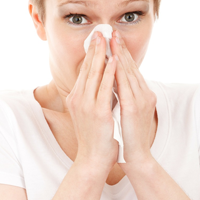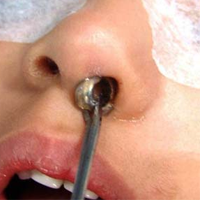Nasal Polyps: An Overview

Nasal polyps are abnormal growths that occur inside the nasal passages and the sinuses (canals found behind the cheekbones). Nasal polyps can range from unnoticeable to large lumps, and sometimes they can hang outside the nose. They can be pink but also yellow or grey in colour. They are soft and often described as jelly-like.
Symptoms of nasal polyps:
Nasal polyps tend to be unnoticeable at first, being dismissed as the irritation associated with a common cold. Some early symptoms include itchiness in your throat and your nose becoming stuffy or occasionally clogged up.
These symptoms can increase, and are often followed by your nose running a lot, unexplained bleeding and your nostrils becoming clogged completely.
In some cases, if these growths are deep enough in your nose they block the airways at the back of your nasal cavity completely. When nasal polyps get big enough, they are easily visible from the outside.
Nasal polyps can cause you to have difficulty breathing. Loss of sleep can result and snoring is a less common symptom, but also occurs if the mucus growths partly obstruct the airways. You will also find you are more tired and have difficulty concentrating.
This is attributed to poor intake of air. You will often compensate by breathing through your mouth, which will cause you to be more susceptible to colds and upper airway infections. This is a result from the fact that you cannot filter the air you breathe through your nose.
In short, symptoms include:
- Nasal congestion
- Anosmia (loss of sense of smell)
- Sinusitis
- Secondary infection which can lead to headaches
- Snoring may occur while sleeping
- Facial changes are not common, but are can occur
- Nose bleeds
- Coryza
Cause of Nasal Polyps:
The exact cause for nasal polyps is unknown; however, they are commonly thought to be caused by:
- Asthma
- Cystic fibrosis
- Exposure to some forms of chromium
- There are a few illnesses that can be associated with nasal polyp formation:
- Asthma
- Chronic rhinosinusitis
- Aspirin intolerance
- Kartagener’s syndrome
- Young’s syndrome
- Churg-Strauss syndrome
- Nasal Mastocytosis
- Cystic fibrosis


